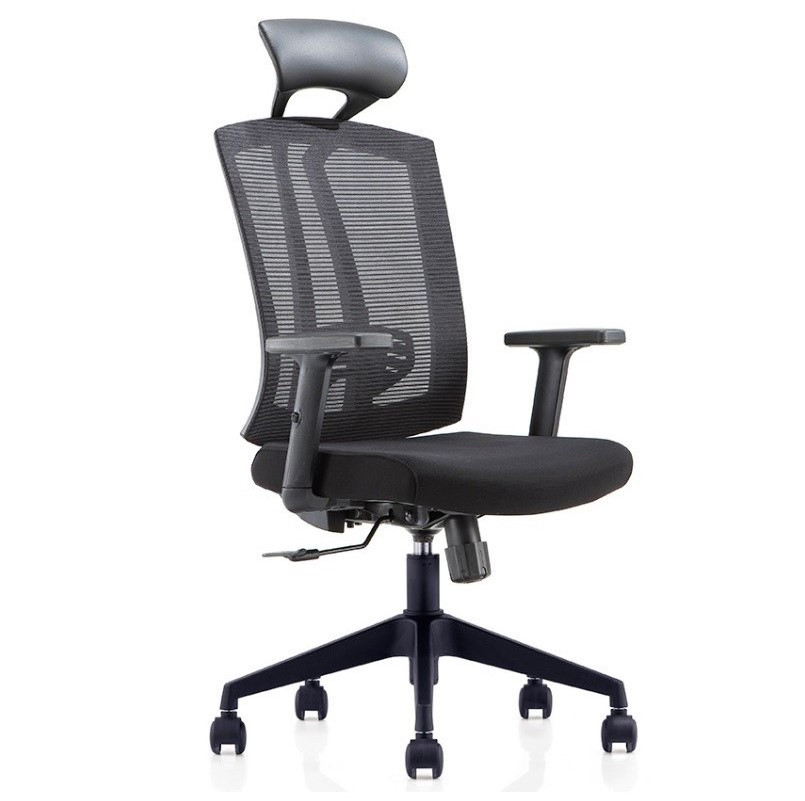
Benefits of High-Density Foam in Office Chair Seating
Introduction
The material inside your office chair has a significant impact on how you feel throughout the workday. Among the top choices for premium seating, high-density foam stands out as a reliable solution for long-term comfort and ergonomic support. It conforms to your body without losing shape and ensures consistent support for hours. In this article, we explore the benefits of high-density foam in office chairs and how it enhances your overall sitting experience.
1. Long-Lasting Comfort
High-density foam maintains its structure over time, unlike cheaper materials that compress quickly. This means you’ll enjoy the same level of comfort on day one as you will months or years later—ideal for daily office use.
2. Superior Weight Distribution
The foam evenly distributes weight, reducing pressure points in your hips, thighs, and lower back. This helps prevent fatigue during long work sessions and promotes better circulation.
3. Maintains Posture Alignment
Because high-density foam doesn't sag easily, it continues to provide support for your spine and lower back. This promotes proper posture, reducing strain and discomfort throughout the day.
4. Ideal for Extended Use
For those who sit at a desk for long hours, high-density foam helps prevent seat fatigue. It remains firm and supportive, making it perfect for intense workdays, creative projects, or extended meetings.
5. Resistance to Wear and Tear
Durability is a key advantage. High-density foam resists deformation and retains its resilience even with daily use, ensuring the chair looks and feels good for a longer period.
6. Enhances Seat Contouring
The dense structure of the foam molds to your body just enough to provide tailored support without over-sinking, offering a balanced and ergonomic seating experience.
7. Reduced Micro-Movements
Soft, low-density cushions may cause constant micro-adjustments. In contrast, high-density foam provides a steady sitting foundation, reducing those small movements that contribute to fatigue.
8. Compatible with Ergonomic Features
Chairs built with high-density foam work well with lumbar support systems, adjustable seats, and reclining mechanisms, enhancing the overall ergonomic effect.
9. Better Return on Investment
Though chairs with high-density foam may cost more initially, their longevity and consistent comfort make them a smart long-term investment, especially in professional or home offices.
10. Professional Feel and Finish
Chairs with high-density foam often maintain a structured and clean silhouette, adding to the professional appeal of your workspace.
Additional Considerations When Choosing High-Density Foam Chairs
Evaluate Your Daily Sitting Time
If you're seated for more than 6 hours a day, high-density foam becomes not just beneficial but essential for maintaining comfort and productivity.
Pair With Breathable Upholstery
Foam paired with mesh or ventilated fabric enhances airflow and reduces heat buildup, keeping you comfortable even during long stretches of sitting.
Check for Certifications
Some high-density foams are certified for environmental and health safety. Look for chairs that meet recognized standards like CertiPUR-US for added assurance.
Don’t Overlook the Backrest
While seat cushioning is vital, high-density foam in the backrest also adds to full-body support, especially when paired with lumbar or ergonomic shaping.
Mind the Seat Depth
Foam should be distributed across a well-proportioned seat. A good seat depth ensures the foam supports your thighs without cutting off circulation at the knees.
Test the Firmness
The ideal high-density foam should be firm yet slightly yielding—enough to support your frame without feeling hard or stiff.
Compare Upholstery Compatibility
Some foams work better with leather, others with mesh. Choose a chair that blends foam density with suitable outer materials for a complete ergonomic effect.
Consider Multi-Zone Designs
Some high-density foam chairs are crafted with different firmness zones—softer in pressure areas and firmer where support is most needed.
Make Sure It's Well-Balanced
A foam seat must work harmoniously with the chair’s base and tilt mechanisms to provide proper weight balance and posture support.
Check for Multi-Layered Padding
Premium ergonomic chairs may include layers of foam for added softness or breathability on top of a dense support core.
Recommended Products:
-
Sitma Black Ergonomic Executive Chair
Crafted with high-density cushioning, this executive chair provides dependable support and firm comfort throughout the workday. A sleek design with smooth adjustability. -
Yokon High Back Ergonomic Chair
Designed with a structured ergonomic back and dense seat foam, this chair supports proper posture and all-day seating comfort with breathable mesh for a fresh feel.
Final Thoughts
Choosing a chair with high-density foam can significantly improve your office experience. It delivers a reliable combination of comfort, support, and resilience—making long hours feel less taxing. Whether you’re setting up a home office or upgrading your workspace, opting for this type of cushioning ensures your seat stays just as dependable as your work ethic.
FAQ
Q: How do I know if a chair has high-density foam?
A: Look for product descriptions that highlight foam density or mention long-lasting ergonomic cushioning. Trying the chair in-store or reading reviews can also help.Q: Is high-density foam too firm for comfort?
A: No. While it’s firmer than low-density options, it’s designed to provide support without sacrificing comfort. It adapts slightly to your body but maintains shape.




